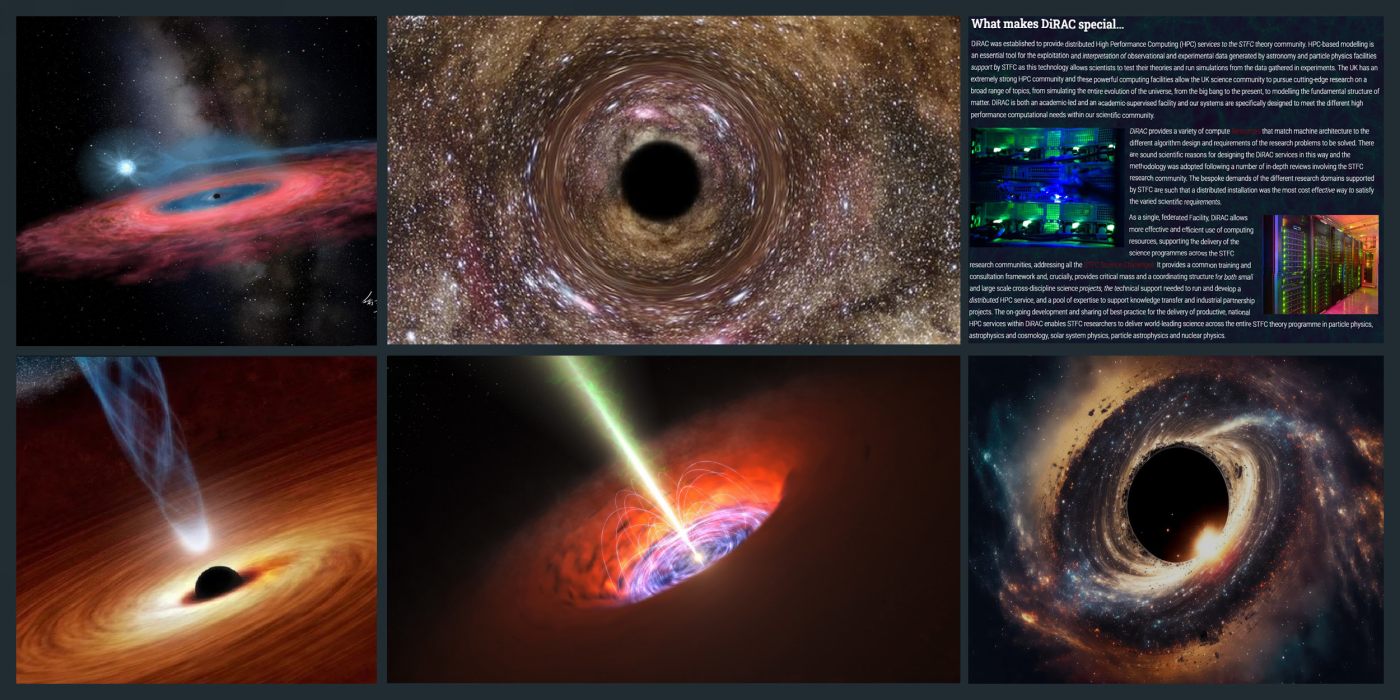
Breaking News
An ultramassive black hole over 33 billion times the mass of the sun has been discovered by UK astronomers.
Scientists from Durham University said the gargantuan black hole is one of the biggest ever found!
The team, led by Durham University, UK, used gravitational lensing – where a foreground galaxy bends the light from a more distant object and magnifies it – and supercomputer simulations on the DiRAC HPC facility, enabled the team to closely examine how light is bent by a black hole inside a galaxy hundreds of millions of light years from Earth.
They found an ultra-massive black hole, an object over 30 billion times the mass of our Sun, in the foreground galaxy – a scale rarely seen by astronomers.
This is the first black hole found using the technique, whereby the team simulates light travelling through the Universe hundreds of thousands of times. Each simulation includes a different mass black hole, changing light’s journey to Earth.
When the researchers included an ultra-massive black hole in one of their simulations the path taken by the light from the faraway galaxy to reach Earth matched the path seen in real images captured by the Hubble Space Telescope.
A gravitational lens occurs when the gravitational field of a foreground galaxy appears to bend the light of a background galaxy, meaning that we observe it more than once.
Like a real lens, this also magnifies the background galaxy, allowing scientists to study it in enhanced detail.
The study, which also includes Germany’s Max Planck Institute, opens up the tantalising possibility that astronomers can discover far more inactive and ultra-massive black holes than previously thought, and investigate how they grew so large.
Lead author Dr James Nightingale Department of Physics, Durham University, said: “This particular black hole, which is roughly 30 billion times the mass of our Sun, is one of the biggest ever detected and on the upper limit of how large we believe black holes can theoretically become, so it is an extremely exciting discovery.”
Dr Nightingale and Lead author said: “Most of the biggest black holes that we know about are in an active state, where matter pulled in close to the black hole heats up and releases energy in the form of light, X-rays, and other radiation.
“However, gravitational lensing makes it possible to study inactive black holes, something not currently possible in distant galaxies. This approach could let us detect many more black holes beyond our local universe and reveal how these exotic objects evolved further back in cosmic time.”
Researchers from Durham University have discovered the ultra massive black hole by using a phenomenon known as gravitational lensing, where they effectively convert a nearby galaxy into a giant magnifying glass.
Scientists from Durham University said the gargantuan black hole is one of the biggest black holes ever found!
The team described its findings, published in the journal Monthly Notices of the Royal Astronomical Society, as “extremely exciting”.
Talk time will be from approx. 7:10pm.
Please show your support (if you can).
The story of this particular discovery started back in 2004 when fellow Durham University astronomer, Professor Alastair Edge, noticed a giant arc of a gravitational lens when reviewing images of a galaxy survey.
Fast forward 18 years and with the help of some extremely high-resolution images from NASA’s Hubble telescope and the DiRAC COSMA8 supercomputer facilities at Durham University, Dr Nightingale and his team were able to revisit this and explore it further.
The team hopes that this is the first step in enabling a deeper exploration of the mysteries of black holes, and that future large-scale telescopes will help astronomers study even more distant black holes to learn more about their size and scale.
The research was supported by the UK Space Agency, the Royal Society, the Science and Technology Facilities Council (STFC), part of UK Research and Innovation (UKRI), and the European Research Council.
This work used both the DiRAC Data Intensive Service (CSD3) and the DiRAC Memory Intensive Service (COSMA8), hosted by University of Cambridge and Durham University on behalf of the DiRAC High-Performance Computing facility.
When Where Who
- Date: Sunday 16th April 2023,
- Time: from 7:00 pm.
- Speaker: Dr James Nightingale
- Venue: At the Washington Wetlands Centre (Discovery Room ) and Via Zoom.
Our speaker
Our speaker is Dr James Nightingale a is a member of the Department of Physics, Durham University.
Talks at the Wetlands and via Zoom
Talks at Wetlands Centre
The SAS is planning to run this lecture from the our base of operations Washington Wetlands Centre (in the usual Discovery Room) and via Zoom.
Suitable hand sanitisers will be located in the room and at the our observatory.
Talks via Zoom
SAS Talks at the Wetlands Centre will also shown via Zoom.
However, this Zoom internet connection B/W can be temperamental and cannot always be guaranteed when set up from the Wetlands Centre
We aim to continue this capability depending upon the circumstances and/or location of the speaker for the talk.
Zoom Access
Therefore if you interested in viewing and participating (i.e. Q&A) in this month’s talk, please send an email request to zoom-meetings@sunderlandastro.com
Stating your:
- Name
- And if you are a member or if you have a just a general interest in attending our lecture(s)
We will then send you details on How to join the Zoom video meeting for the SAS talk.
The requisites will be:
- Meeting ID – 375 091 0450
- Password Begins with “C*****”






